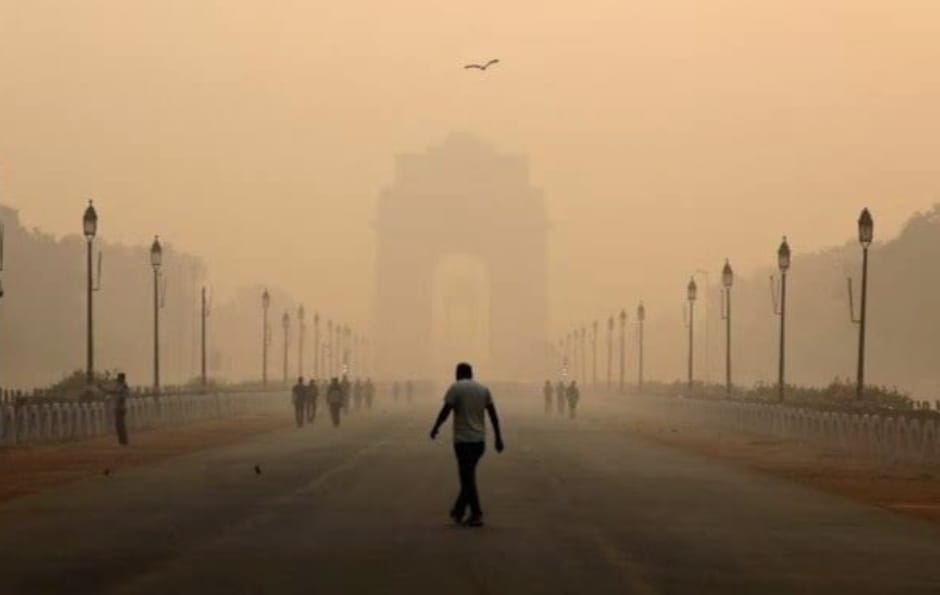
Shivani Singh
Recent data from the Indian Institute of Tropical Meteorology (IITM) in Pune has revealed that stubble burning by farmers contributes just 1.3% to Delhi’s air pollution, contradicting a long-standing narrative that has placed much of the blame on agricultural practices in neighboring states.
Despite the relatively small contribution of stubble burning to the capital’s toxic air, farmers have faced years of scrutiny, criticism, and dehumanization—a campaign rooted more in classism than in environmental facts.
The numbers paint a clear picture. On October 19, 2024, stubble burning accounted for only a fraction of the city’s overall pollution.
In contrast, vehicular emissions—largely from private cars, which are concentrated in more affluent sections of society—contributed around 14% to the pollution levels, and industrial activities, dust, and waste burning add further to the city’s deteriorating air quality.
Yet, it is the farmers, whose livelihoods depend on the seasonal clearing of crops, who have consistently been vilified in public discourse.
The monopoly of rich/urban on public narratives
The disproportionate blame placed on farmers raises serious questions about the role of class in environmental narratives.
Farmers, who mostly represent a lower or rural economic class, have been scapegoated, while larger polluters—industries, construction activities, and vehicular emissions linked to wealthier, urban populations—remain relatively unscathed in public debate.
This dehumanization of farmers reflects deeper societal prejudices and a tendency to hold the most vulnerable accountable for issues that are, in reality, largely systemic.
The stubble-burning narrative is an example of how environmental discourse is often skewed by class interests.
The rural poor, already marginalized, become easy targets for urban pollution problems, despite the fact that upper-class consumption and activities, such as owning multiple vehicles and engaging in unchecked industrial growth, play a far greater role in exacerbating the situation.
According to the IITM data, around 32-44% of Delhi’s pollution comes from unidentified sources, likely linked to various urban and industrial processes, yet these are rarely scrutinized with the same intensity as stubble burning.
Classism and Environmental Injustice
This issue can be analyzed through the lens of environmental justice, which seeks to understand how environmental hazards and benefits are distributed unequally across different social classes.
The narrative around stubble burning exemplifies how environmental blame can be disproportionately assigned to the lower classes, even when they contribute far less to the problem.
Farmers, who often lack political power and media representation, are made to shoulder the burden of pollution that is largely driven by urban development and industrialization.
The moral panic around stubble burning reflects a broader issue in environmental discourse: classism. By focusing on the practices of farmers, policymakers and the media deflect attention from the more uncomfortable reality that the lifestyles and activities of the urban elite are far more responsible for the city’s dire air quality.
Additionally, symbolic violence—a term coined by sociologist Pierre Bourdieu—helps explain how societal narratives can degrade the dignity of marginalized groups, in this case, the farmers.
The media portrayal of farmers as responsible for the city’s pollution crisis serves to reinforce class divides, masking the contributions of wealthier sectors to environmental degradation.
The failure to adequately address the real culprits—such as vehicular emissions, industrial activities, and urban waste—only worsens the situation.
Despite vehicles contributing around 14% to the city’s pollution, and neighboring industrial cities like Noida and Ghaziabad contributing 10-11%, these sources are not met with the same public outcry.
The pollution from construction activities and waste burning, although smaller in percentage, are also significant, yet go largely ignored.
These upper-class sources of pollution are entangled with the economic and political powers that shape policy, making them less likely to face regulation or public scrutiny.
Environmental economist E.J. Mishan famously noted that economic growth, driven by wealthier classes, often overlooks the environmental damage that it causes, and this holds true in Delhi’s pollution crisis.
Delhi’s air quality crisis is undeniably complex, but it is clear that focusing blame on farmers for the city’s pollution is misguided and rooted in class bias.
Until there is a more honest conversation about the real sources of pollution—particularly those stemming from urban and industrial activities—the capital’s air quality will continue to deteriorate.
Addressing this requires moving beyond scapegoating vulnerable populations and acknowledging the environmental responsibility of all classes, especially those whose activities contribute far more to the problem.
As long as this dehumanizing narrative continues, the solutions will remain elusive, and the air will stay as polluted as the discourse surrounding it.
Shivani is a post graduate in environmental studies. She volunteers with several environmentalist organisations based in Delhi.
